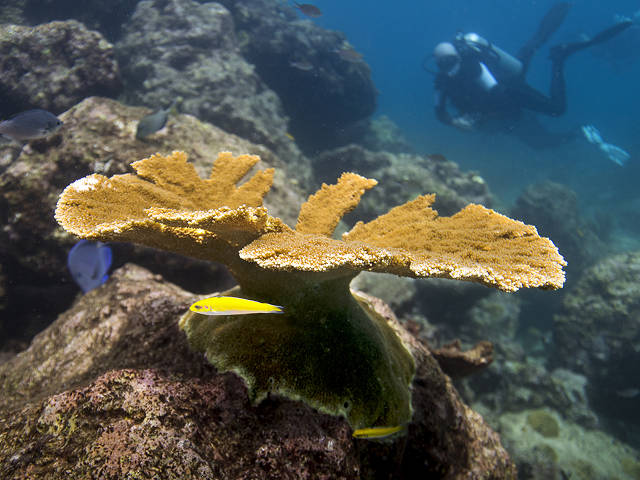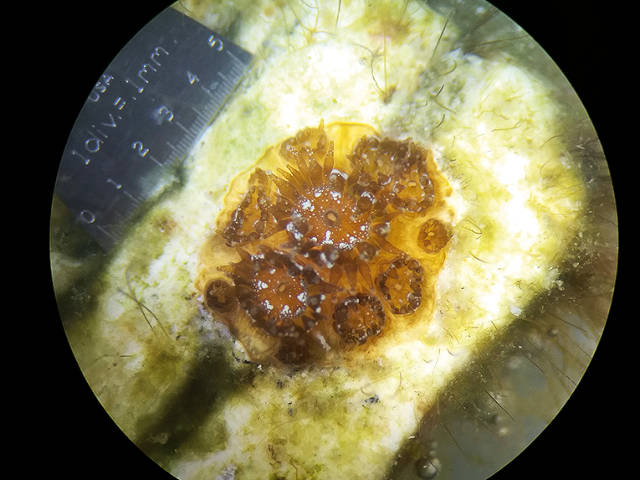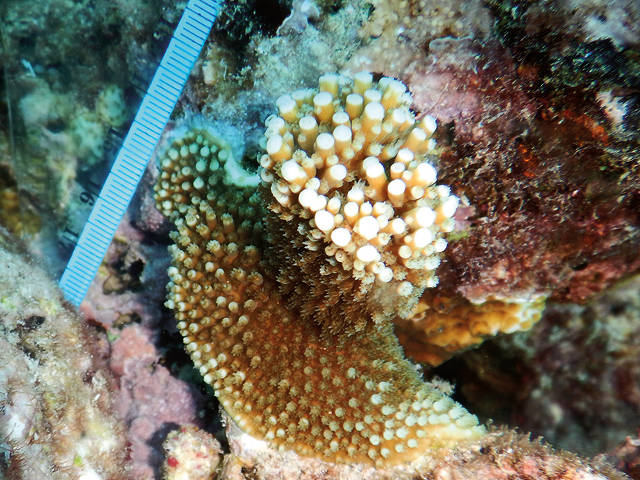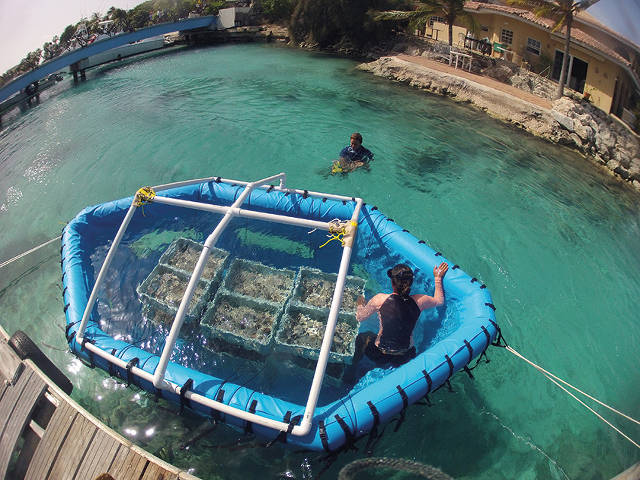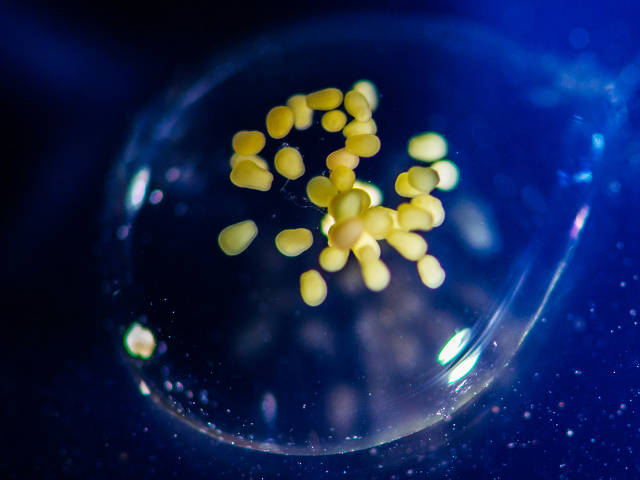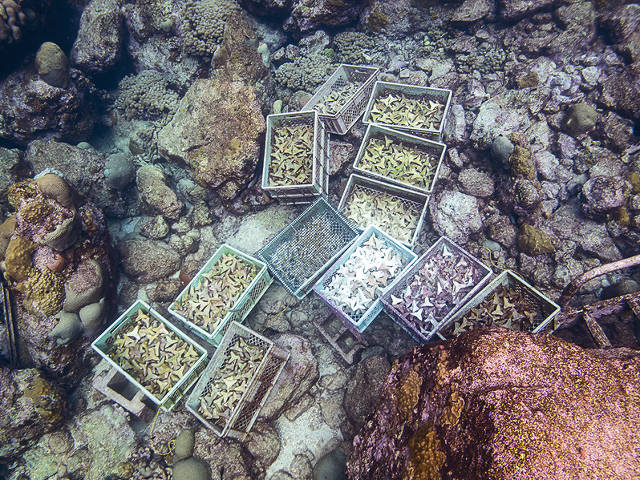We aim at addressing two priorities: (1) increase the efficiency of restoration actions, including new technologies and tools and (2) integrate resilience enhancement strategies as they become available. We are making newly developed tools available to our increasing network of restoration practitioners for immediate implementation.
What we currently do
We routinely produce millions of genetically unique coral larvae by collecting gametes during natural spawning events followed by in-vitro fertilization. Resulting coral settlers are placed back on the reef, hence increasing genetic diversity and resilience of natural populations (laboratory bred corals reproduce in the wild).
- We are working to optimize a novel approach (Seeding Concept), whereby coral larvae are settled on specifically designed substrates. These substrates may be seeded on degraded reefs without the need of manual attachment, which is currently the most time consuming step in the restoration process. This approach in its current stage reduces the effort required for outplanting by an order of magnitude.
- We develop alternative approaches to produce large quantities of sexual offspring independently of land-based culture facilities. For example, Coral Rearing In-Situ Basins (CRIB) have reduced the infrastructure costs considerably (by at least two orders of magnitude) and need only 5% of the labor compared to operating traditional land-based facilities (Engineering is becoming an integral part of coral reef restoration).
- We seek to apply tree nurseries and asexual fragments to produce brood stocks for highly endangered coral species which no longer manage to fertilize naturally. In the future, gametes of known genotypes may be effectively collected and used for coral sexual restoration.
- We research opportunities to enhance the settlement and survival of coral babies, for example, by growing them together with natural grazers such as the Diadema sea urchin in the Caribbean. Preliminary results show an almost two-fold increase in settlement when Diadema sea urchins are included in the process.
- We apply the highest scientific standards and work across disciplines, including coral reef ecology, restoration genetics, engineering, and manufacturing. We partner with researchers and stakeholders in the academic and nonprofit sector as well as working closely with governmental organizations and contracting with for-profits in the manufacturing and engineering sectors.
- All developed tools are implemented through local partners (Successful initiation of a larval rearing program), who are provided with hardware as well as training and mentoring over a time period of 3-5 years after which they are able to fully integrate these new tools in their local management plan.
Near-term Goals
We are getting more local partners involved and expanding our efforts in the Pacific region. We receive more requests for help from practitioners and coastal managers than we can cover through our current funding resources.
We are increasing the efficiency of micro fragmentation, direct larval seeding and other promising techniques, and are providing engineering solutions to practitioners to compliment a wide range of restoration scenarios and local conditions.
We are expanding our engineering network with academic and industry partners
The Global Coral Restoration Program started in the Caribbean with working sites in Mexico, Curaçao, The Bahamas, the US Virgin Islands, the Dominican Republic, Bonaire and will expand into the Pacific region as resources become available. All efforts are carried out in close collaboration with local partners.
Read more:
- about our Engineering Restoration
- about Coral Resilience
- check out our Newsroom
SECORE's mission is to create and share the tools and technologies to sustainably restore coral reefs worldwide.
You can make a difference: your donation is vital for us to continue where we excel - creating the tools to sustainably restore coral reefs around the world.
Partners on-site
Australian Institute of Marine Science
Cape Eleuthera Institute, The Bahamas
CARMABI, Curaçao
Curaçao Sea Aquarium
FUNDEMAR, Dominican Republic
Coralium, National Autonomous University of Mexico
Newcastle University, England
Perry Institute of Marine Science, The Bahamas
Reef Renewal Bonaire
The Nature Conservancy in the Caribbean, USVI
title pic: Jamie Craggs, Horniman Museum and Gardens; reworked







